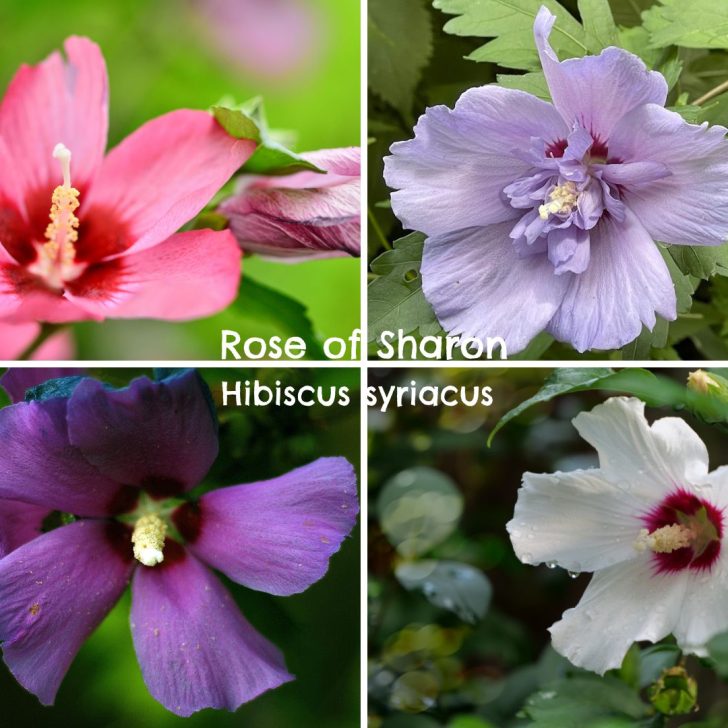As with many plants, Rose of Sharon names include numerous common names. Some even have more than one scientific or botanical name, so we cover all of that in this article. But first…
Is Rose of Sharon a Hibiscus?
If you’re wondering if Hibiscus syriacus is the same plant as Rose of Sharon, the answer is yes… at least mostly.
The Hibiscus Rose of Sharon is the most familiar flowering plant that goes by that common name of Rose of Sharon. However, there is another, which we will also cover.
The beautiful Rose of Sharon flower gets her looks from the Malvaceae family of Hibiscus, along with okra and the marsh mallow plant. Native to eastern Asia, Rose of Sharon is now planted worldwide as an ornamental for its elegant blossoms in various shades.
Rose of Sharon Names
The plant that is most commonly called Rose of Sharon is the Hibiscus syriacus.
Scientific Names for Plants Commonly Called Rose of Sharon
- Hibiscus syriacus – hibiscus
- Malvaceae family
- Hypericum calycinum –
- Common Names: St. John’s Wort, Aaron’s beard, Jerusalem star.
- Hibiscus rosa-sinensis – hibiscus
- Hypericum calycinum –
- Malvaceae family
Common Rose of Sharon Names
- Althea tree
- Chinese hibiscus
- Mugunghwa (South Korean)
- Rose of Sharon
- Rose mallow
- Shrub althea
- Syrian hibiscus
- Syrian mallow
Other Plants Sometimes Called Rose of Sharon
- Hypericum calycinum – St. John’s Wort
- Hibiscus rosa-sinensis (var. ‘Vulcan’), is the national flower of Malaysia
- Hibiscus syriacus – the rose mallow and national flower of South Korea
The Rose of Sharon name is most commonly used for the Hibiscus syriacus plant.
But there’s another plant that is sometimes called Rose of Sharon. It’s the Hypericum calycinum, of the family Clusiaceae. More commonly known as St. John’s Wort, this plant is called Rose of Sharon in some places.
For our article here, we’re primarily focusing on the Hibiscus versions of the Rose of Sharon.
Rose of Sharon – National Flowers
Hibiscus Syriacus – National Flower of Korea
The rose of Sharon, is the national flower of South Korea and an object of reverence for centuries as a symbol of the resiliency of the South Korean people . The South Korean name for Rose of Sharon in “mugunghwa”, meaning “eternal blossom that never fades.”
Hibiscus Rosa-Sinensis – the National Flower of Malaysia
The Hibiscus rosa-sinensis was declared the national flower of Malaysia on July 28, 1960. Typically pictured as a red variant such as the Hibiscus rosa-sinensis (var. Vulcan).
Rose of Sharon Colors
St. John’s Wort – Rose of Sharon
Hyperium calycinum, the St. John’s Wort that’s sometimes called Rose of Sharon, is an evergreen bush with yellow flowers. However, this plant is not as commonly called the Rose of Sharon as is the hibiscus.
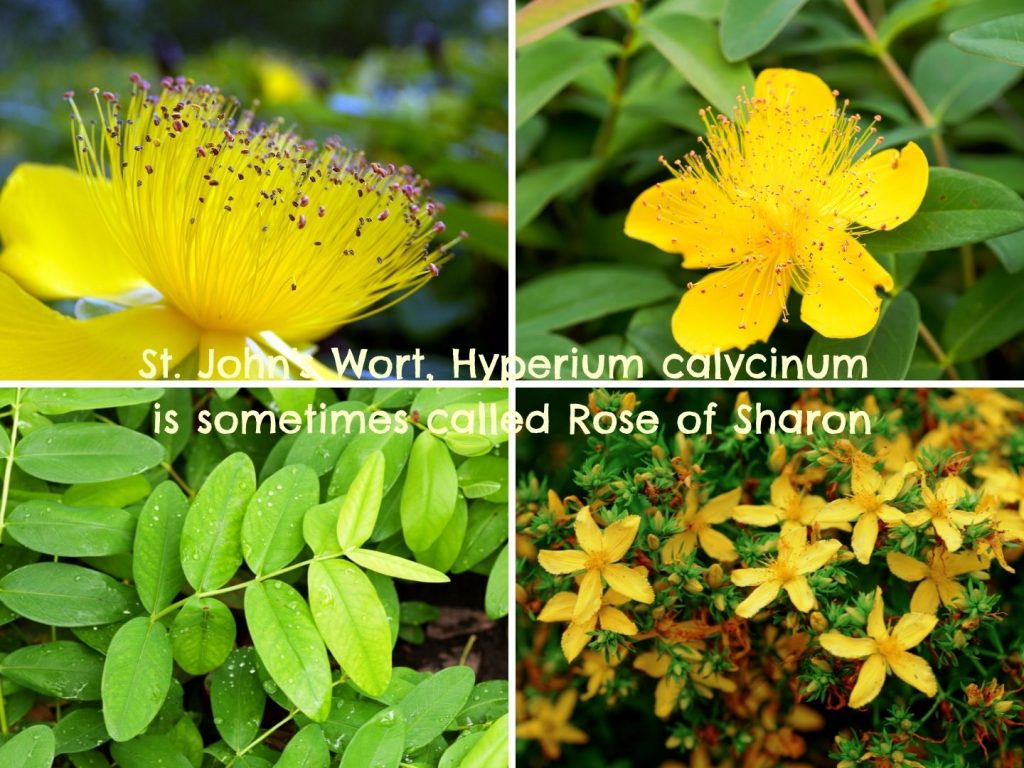
Hibiscus Rosa Sinensis – Rose of Sharon – Zones 9-10
The Hibiscus rosa-sinensis is another hibiscus variety that is sometimes called Rose of Sharon, and it comes in many colors and variants as well. We’ve written about one of our favorite rosa-sinensis varieties here, the Sunset or Fiesta Hibiscus.
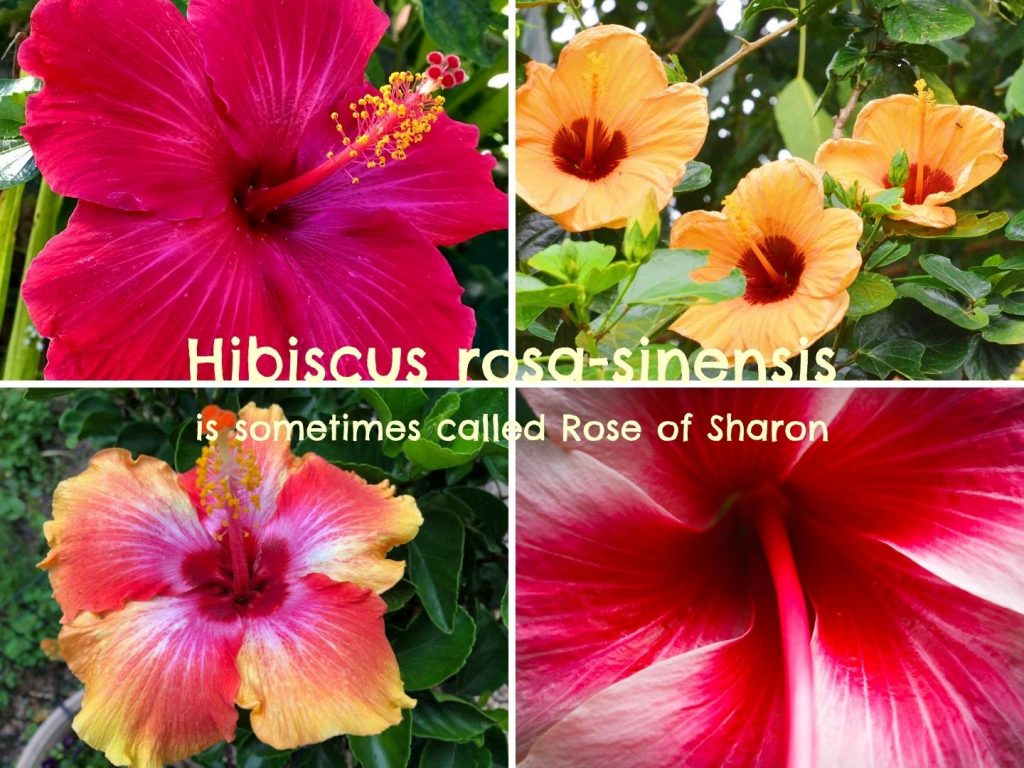
Hibiscus Syriacus – Rose of Sharon – Zones 5-9
The Hibiscus syriacus, is the only hibiscus variety known as Rose of Sharon. What distinguishes it from the other hibiscus varieties is that it is a deciduous cold hardy hibiscus.
Hardy in USDA Hardiness Zones 5-9, the H. syriacus may be grown as an evergreen indoors in colder zones or outdoors in zones 9 and higher.
This hibiscus is the most commonly named Rose of Sharon plant and comes in varying shades of these colors:
- Bicolored
- Blue
- Pink
- Purple
- White
The most common rose of sharon colors are in purple or lavender, however they also come in white, pink, blue, or bicolored. Many of the blossoms have a dark colored throat surrounded by lighter colored petals.
Are There Any Yellow Rose of Sharon Hibiscus?
We had one community member ask why there were no yellow Rose of Sharon flowers.
Hmmm… Good question! So we looked into it.
Why There Aren’t Any Yellow Rose of Sharon Hibiscus Flowers
The flowers of Rose of Sharon (Hibiscus syriacus), are typically white, red, lavender, or light blue, with a red spot at the base of each petal.
The reason there are no yellow Rose of Sharon plants has to do with the genetic makeup of the plant and the pigments it produces. Flower color in plants is usually determined by pigments such as anthocyanins, carotenoids, and flavonoids.
In the case of the Rose of Sharon, it does not have the specific genes needed to produce yellow pigments in its flowers. Its genetic makeup is such that it produces pigments which result in other colors like white, red, lavender, or light blue.
This does not mean that it would be impossible for a yellow Rose of Sharon to exist, however. Through selective breeding or genetic engineering, it might be possible to introduce the genes necessary for producing yellow pigments.
Beyond that, all of the yellow hibiscus (as opposed to bi or multi-colored ones) are the tropical Hibiscus Rosa-Sinensis variety. Also, the Hawaii state flower is a unique Hibiscus brackenridgei, said to only grow in Hawaii.[1]https://mnbg.org/hawaiian-native-plant-collection/mao-hau-hele-hibiscus-brackenridgei/[2]https://www.explore-the-big-island.com/hawaii-state-flower.html
So perhaps it is also that the yellow flowers in the hibiscus genus are just warm natured! 🤔 Having grown up in Hawaii, I can relate❣️🌼🏝️
How About Pruning Rose of Sharon?
Check out this article if you need help on pruning your Rose of Sharon shrub?
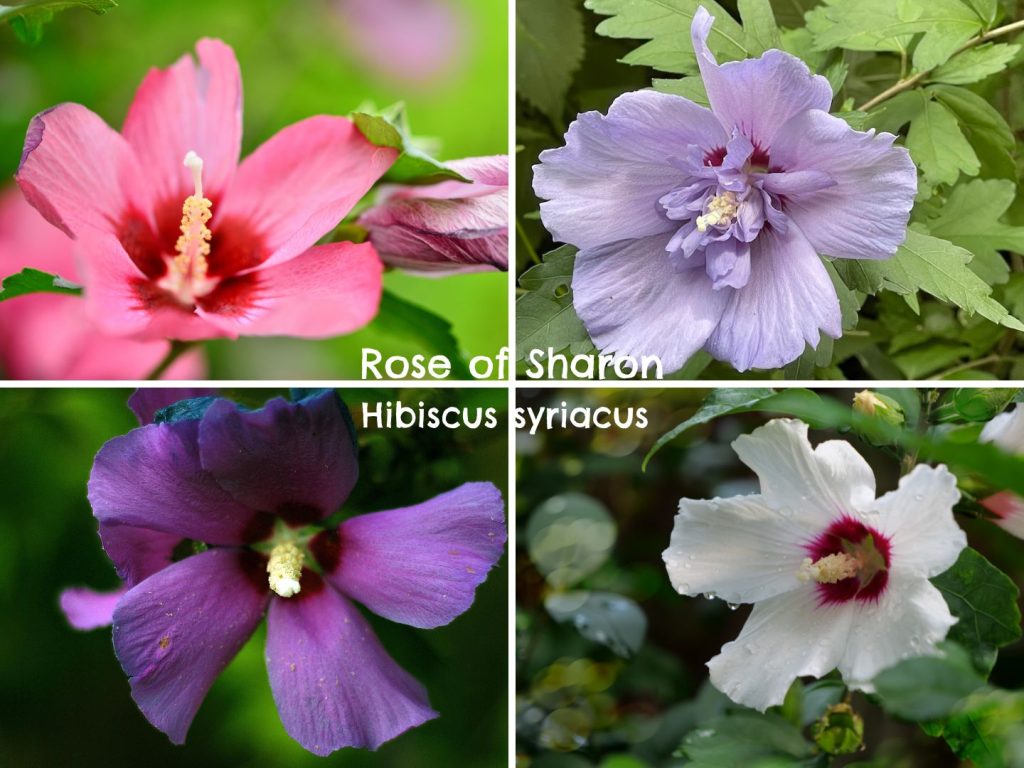
We have the pale lavender variety with a tiny splash of burgundy in the center center, named Lavender Chiffon variant of Hibiscus syriacus pictured below.
Ours are not blooming as prolifically in this spot because it’s in partial shade and would prefer more sun.
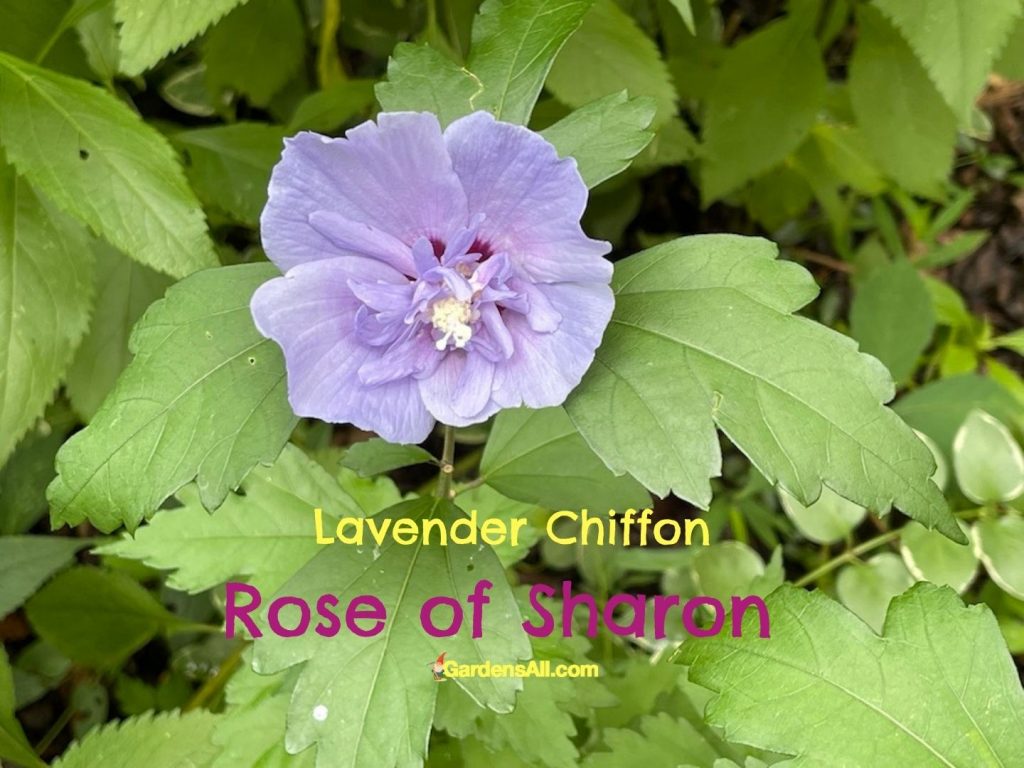
I’m LeAura Alderson, a garden, herb and plant enthusiast with a passion for discovering the many edible and medicinal benefits of the plants all around us, including the weeds! I’m a writer, editor and media publisher for our family of websites.
While I was certified in fitness and life coaching, I am NOT a health practitioner. However, I’m a lifelong health enthusiast, with a keen interest in healthy, organic foods and making home remedies and the content we share is from our own experience and usage as well as that extracted from scientific research so that you can explore further on your own.
Always seek the advice and guidance of your health practitioners first and foremost.
As a family we’re steadily expanding our gardening, experimentation and knowledge around all things gardening, edible landscaping, fresh organic foods and self sustainability with farming in our future. I also own and manage iCreateDaily.com, a site all about transformation through creation, and the power of positivity, optimism and mindset.
References

